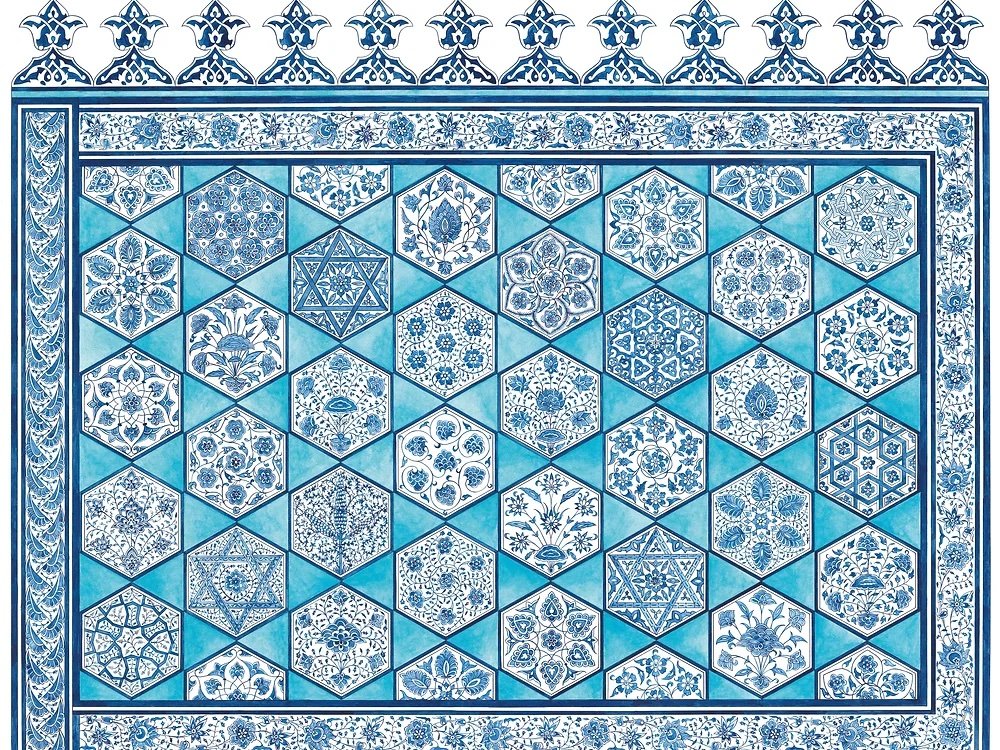 Image 1 of 3
Image 1 of 3

 Image 2 of 3
Image 2 of 3

 Image 3 of 3
Image 3 of 3




Muradiye Tilework
This masterpiece includes tilework from the 15th century Muradiye Camii (Mosque) in Türkiye. The small mosque was commissioned by Sultan Murad II and completed in 1435-6. The Sultan was inspired by a dream, in which the founder of the Mevlevi order, Jalal ad-Din Rumi asked him to erect a place of worship for his brotherhood. It originally formed part of a Mevlevi dervish complex but was later converted into a mosque. The complex included a soup kitchen and an elementary school, but these buildings have not survived. Most of the tiles visible on the walls are hexagonal, decorated with unique patterns in white and blue. They are interwoven with turquoise triangular tiles. Unfortunately, some of the tiles were stolen and the gaps have been filled with plaster. This is a Museum quality print on textured paper.
100% of proceeds support our traditional Islamic arts studio
This masterpiece includes tilework from the 15th century Muradiye Camii (Mosque) in Türkiye. The small mosque was commissioned by Sultan Murad II and completed in 1435-6. The Sultan was inspired by a dream, in which the founder of the Mevlevi order, Jalal ad-Din Rumi asked him to erect a place of worship for his brotherhood. It originally formed part of a Mevlevi dervish complex but was later converted into a mosque. The complex included a soup kitchen and an elementary school, but these buildings have not survived. Most of the tiles visible on the walls are hexagonal, decorated with unique patterns in white and blue. They are interwoven with turquoise triangular tiles. Unfortunately, some of the tiles were stolen and the gaps have been filled with plaster. This is a Museum quality print on textured paper.
100% of proceeds support our traditional Islamic arts studio
